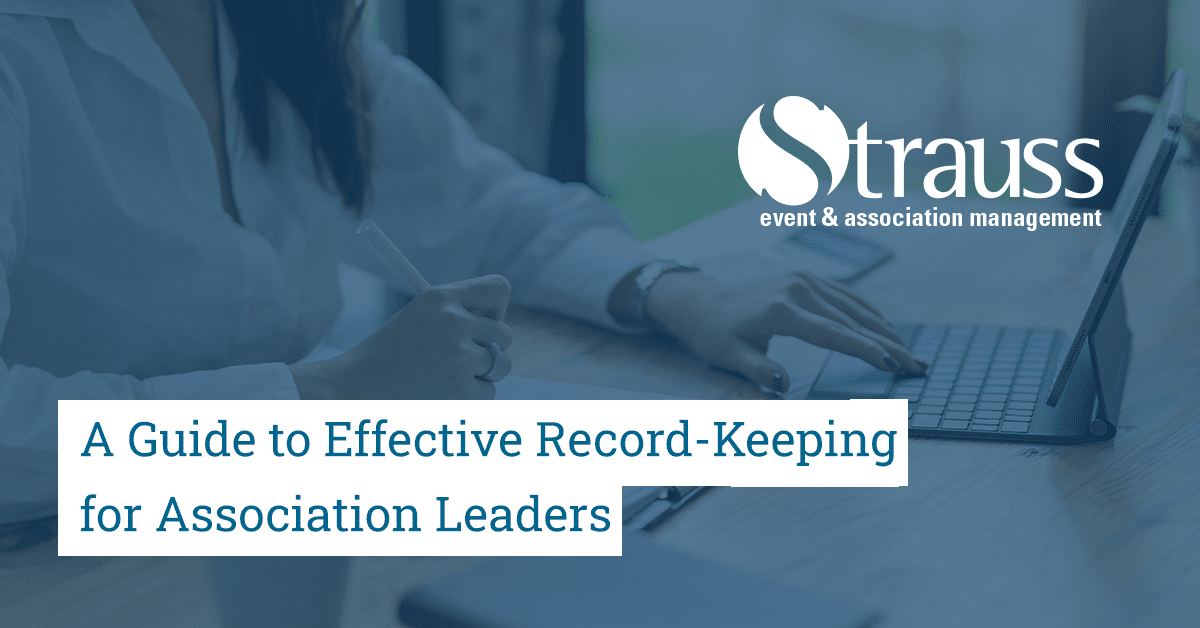When we’re busy, organized and effective record-keeping often falls to the bottom of the list. In between emails or rushing from your day job to an evening Board meeting, you save a few important organizational documents in a new shared folder, call it “Misc” (miscellaneous) and call it a day.
But it’s precisely because of the challenges of our busy lives that it’s so important for associations to keep organized and up-to-date records.
Here are some reasons why organized and effective record-keeping is so important:
-
Organizational memory and continuity
Have you ever had someone leave your association, and they took all of their knowledge with them, leaving a mess of documents and email notes behind? Having an organized record of policies, processes, and past Board decisions helps those new to an organization get their bearings quicker.
It also minimizes the unpleasant transition time. These records can help new Board volunteer leaders understand the history and background behind discussions at current Board meetings, enabling them to jump right into current conversations with all the information they need.
Check out my colleague Elizabeth’s article on How to Get to Know Your Association as Fast as Possible for recommendations on what documents to have on hand to get new Board members up to speed.
-
Informed decision-making
Well-organized, complete association records can help not only new, but also current Board members. Often Board members have to miss meetings for one reason or another, and most often association leaders only meet once a month or less. For all of these reasons, it’s good for association leaders to have a complete record to look back on to stay informed of decisions being made and goings-on in the association, at any time.
These up-to-date and easily accessible records mean time doesn’t have to be wasted on Board meetings rehashing the same discussions from the past year. Instead, Board members can come prepared to work on moving their association forward.
-
Legal requirements and accountability
Non-profit associations are required to keep records of Board decisions, financials, and more, to demonstrate that all their operations are in order. When records are disorganized, it’s easier for things to go missing. Effective record-keeping demonstrates transparency and accountability. Organized records also make it easier and faster to respond to requests for documentation from an auditor, for example. See my colleague’s recent post about The Difference Between an Audit and a Review Engagement for more information on audits.
Here are some practical steps your association can take for effective record-keeping:
- Keep policies and procedures updated. The most important step, of course, is to make sure your association has written policies and procedures. Reference Refining your Association’s Standard Operating Procedures if you don’t know where to start. These policies and procedures are the go-to guide for when questions arise and are also an essential reference for new staff or association leaders. Once the policies and procedures exist, schedule annual or quarterly reviews to keep them up to date and relevant.
- Use a shared document hub. Here at Strauss, we’ve started to use SharePoint sites to house all documents that Boards or committees regularly access, such as the past few years of meeting minutes, policies and bylaws, and board contact information. This cloud-based hub makes it easier for leaders to find the information they need all in one place, rather than losing track of old board email attachments with important information. Effective record-keeping is all about making information easily accessible and quick to find! (Read more about embracing the cloud )
- Use a standard file structure. Don’t get caught in the “Misc” folder trap. Take the time to come up with a standard structure for your association files, with an easily understandable flow that makes sense whether you’re always in the files or trying to find something for the very first time. Start with basic folders like Board, Policies & Bylaws, Committees and then go from there, with folders sorted by year and then getting more detailed.
All the information an association leader needs to fulfill their role well should be quick to find and easily accessible, right at their fingertips!

